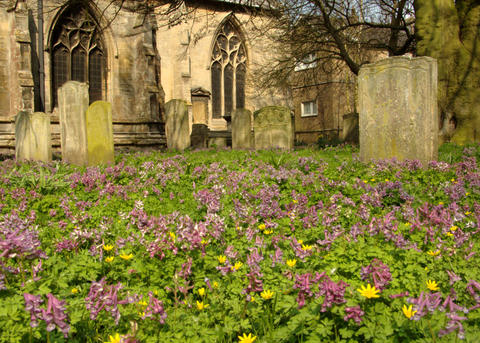
Is Sept 2014, Jonas Mortelmans kindly sent me a copy of his publication on the discovery of the Scathophagid Acerocnema macrocera in the Netherlands and Belgium ([1]). According to this paper, A. macrocera is a tiny (3mm), black and yellow fly associated with the plants Corydalis solida (Fumewort, Bird-in-a-bush) and possibly Corydalis cava (Stagger weed). These two plant species occur as naturalised garden escapes in the Netherlands and Belgium. The fly was first detected in Spa (Belgium) in spring 2012 and identified by Frank Pûchel-Weiling. In consequence, several trips were made in spring 2014 to localities where C. sloida was abundant in both the Netherlands and Belgium and was found at three localities near Maastricht. A search of over 1,500 images of the plant on www.waarnemingen.be and www.waarnemingen.nl resulted in two images being found where the fly was visible on the friuits of the plant. The dates of capture ranged from11 March to 1 May with a peak in the first half of April. The paper concludes that the species remained undiscovered so long because of its small size and very early flight period.
These two Corydalis species aslo occur as naturalised garden eascapes in Great Britain where C. solida is the more frequent and widely distributed. According to the distribution map derived from the NBN Gateway, C. solida occurs quite widely in the Midlands and extends northwards into southern Scotland. Mortelmans & Devillers (2014) comment that the species is likely to occur in neighbouring countries, such as Great Britain - with which I would certainly agree.
Consequently, in the winter of 2014/15 I contacted the BSBI recorders for the vice-counties of Northamptonshire, Huntingdonshire, Cambridgeshire and Southern Lincolnshire asking if they knew of localities for the plants within reasonable distance from Peterborough where I live. I received helpful responses from all four which showed that, whilst the plant does occur in the area, it is either very common or abundant. Never the less, with their help I was able to come up with some localities worth investigating. Three sites were visited on two dates during April 2015 (all during good weather) including two churchyards in the Spalding-Boston area and the grounds of Castle Ashby near Willigborough (where C. cava was also abundant). Of these, All Saint's churhyard in Holbeach had by far the greatest abundance of the plant. Despite spending between 1-1.5 hours sweeping and observing at each site on each visit, no sign of A. macrocera was found.
Despite my failure to find A. macrocera in the Peterborough area in spring 2015, it would be well worth checking more locations where these plants grow. For example, I am told that C. solida is abundant in some sitea around Oxford.
